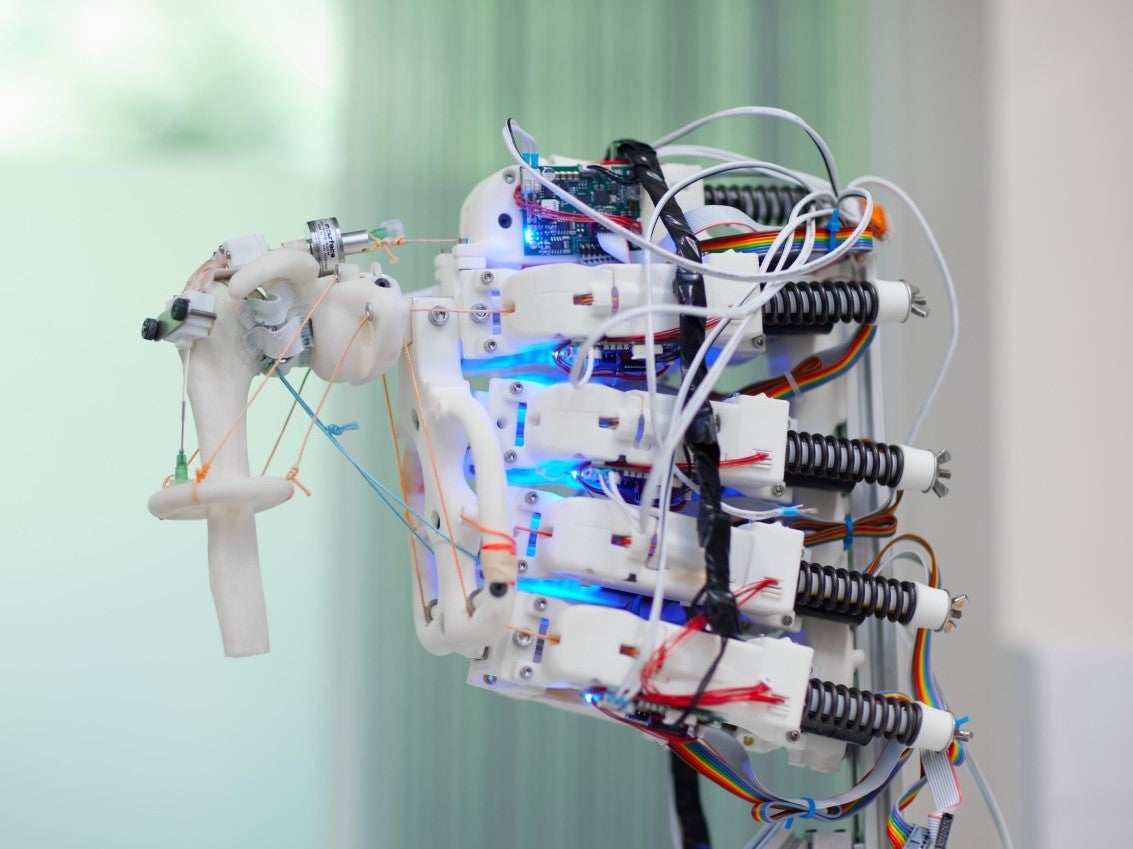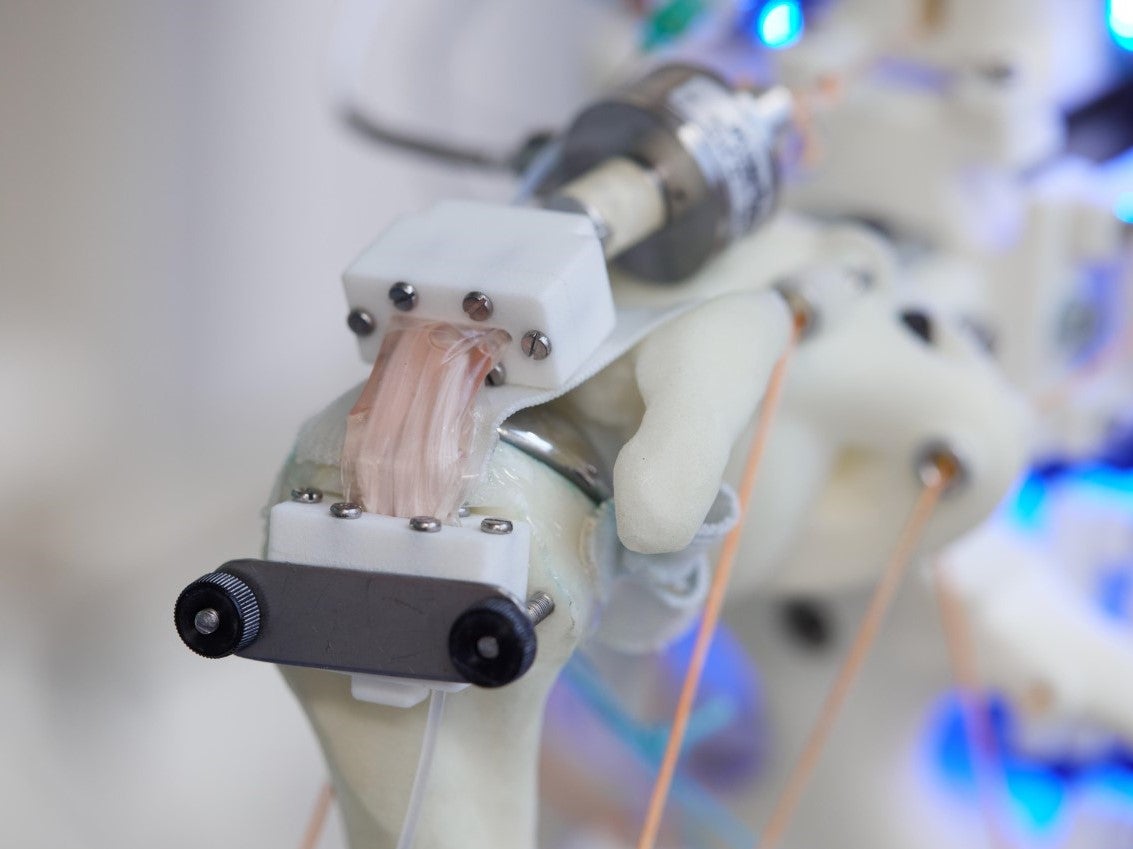Humanoid robots grow human tendon tissue
Research could improve tissue grafts for patients and support the development of more realistic robots

Your support helps us to tell the story
From reproductive rights to climate change to Big Tech, The Independent is on the ground when the story is developing. Whether it's investigating the financials of Elon Musk's pro-Trump PAC or producing our latest documentary, 'The A Word', which shines a light on the American women fighting for reproductive rights, we know how important it is to parse out the facts from the messaging.
At such a critical moment in US history, we need reporters on the ground. Your donation allows us to keep sending journalists to speak to both sides of the story.
The Independent is trusted by Americans across the entire political spectrum. And unlike many other quality news outlets, we choose not to lock Americans out of our reporting and analysis with paywalls. We believe quality journalism should be available to everyone, paid for by those who can afford it.
Your support makes all the difference.A humanoid robot has been used to help grow human tendon tissue as part of research into tissue grafts.
Scientists from the University of Oxford teamed up with engineers from Germany and Switzerland to grow engineered tissues on a robotic shoulder joint.
Placed within a flexible bioreactor, the movement of the shoulder helped stimulate the growth and improve the functionality of the human tendon tissue.
“What researchers have shown for a long time now is that external mechanical stimulation is really key to mature the tissue properly, and to have the cells express the right type of genes,” said Pierre Mouthuy from the Botnar Institute, University of Oxford.
The findings could serve a duel function of improving the production and quality of tissue grafts for patients, as well as support the developoment of more realistic and advanced humanoid robots.
The robotic technology used in the experiments was developed by Rafael Hostettler, whose ultimate aim is to build bio-inspired humanoid robotic bodies that could one day function exactly like a human body.
“We try to imitate the way the human body works and we’re doing this because we believe it’s going to help us build robots that can move just as naturally and graciously as human bodies do,” said Mr Hostettler.
“They’ll be used in research, neuroscience, biomechanics, and so on, but eventually they might be used to build better prosthetics and test new implants.”

After successfully testing the growth of human tissue using the system, the next step is to see if this robotic method can actually be used to grow better tendons for grafts that can be used clinically.
“This has been years of work already and now we’ve demonstrated that it is feasible to use this approach I think the fun only starts now,” said Professor Mouthuy.
“We can explore the different possibilities that we can do and look into whether it can really help to improve the quality of the grafts by providing these more physiologically relevant mechanical stresses.”

Join our commenting forum
Join thought-provoking conversations, follow other Independent readers and see their replies
Comments